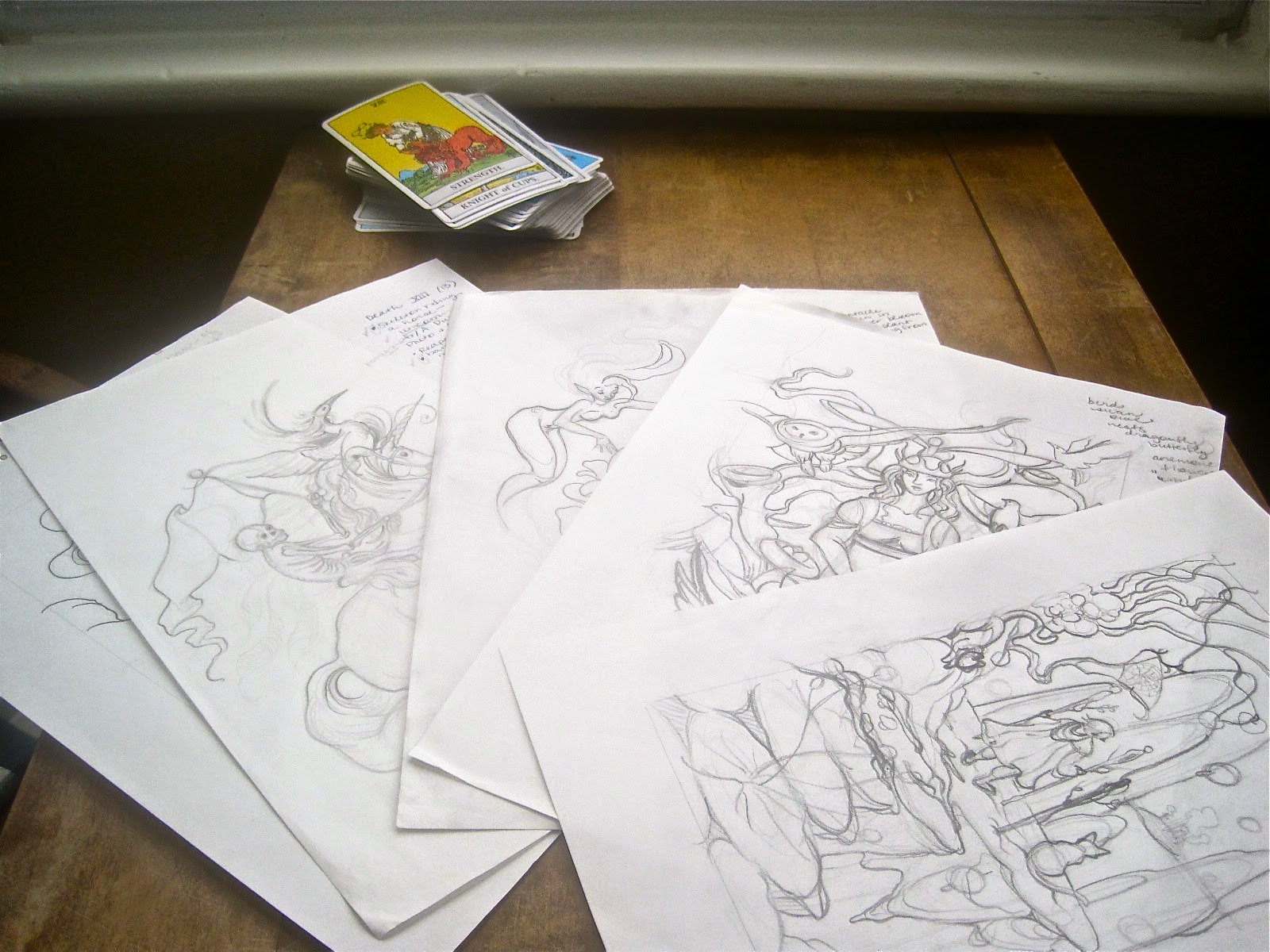Then: read, read, read. I bone up on explanations regarding the card I want to draw or cards that I have a particular interest in. Other people's perspectives give me more ideas, symbols to add to my compositions; sometimes they spark other connections between meanings and the images used to symbolize those meanings. By reading and re-reading card meanings, I build up sort of a repository of tarot definitions and significations in my mind, and I consult them when I'm looking through books for ideas. Sometimes when leafing through one of my books, a painting or drawing catches my eye, and I'm able to correlate that image with a tarot card, how I want to draw it, specifically.
For example, I was looking through Dore's Illustrations for Dante's Divine Comedy, and when I saw his etching of Francesca and Paolo da Rimini stuck in the second level of hell, I knew I wanted to use that composition for my Lovers card (which I will do, after I finish the three cards that I'm now working on).
These images often lead to others, triggering ideas for other cards. I looked up the story of Francesca and Paolo and also found this beautiful painting by Dante Gabriel Rossetti. Perhaps an idea for the Two of Cups? I don't know yet.
I write down all the attributes of the card I'm going to sketch, all the possible symbols I'd like to include, right on the paper on which I'm sketching. For instance, in my sketch for card XIII--Death, I wrote down:
- skeleton riding a horse
- Durer's Pluto and Proserpine
- banner with mystic white rose--rebirth
- ending
- going through transition, moving from known to unknown
- eliminating excess, concentrating on essentials
- frog/toad--movie between worlds (water and earth), seem to die and be reborn
- scarab beetle--transforms bodies and souls
- phoenix
- holly
- cypress (Victorian floriography)
- belladonna
- white lilies
- acanthus
- triumphal arch--death always wins, memento mori, the only thing constant is change
I didn't incorporate all of these ideas into the sketch, but they gave me a deeper understanding of the card. (These basic tenets of the Death card came from Joan Bunning's wonderful Learn the Tarot website.)
My sketches are the same size as the finished card: 5.5" x 8.5" (actually 6" x 9", but scaled down after scanning). As you can see from the picture, some sketches only include the central figure or basic composition. With these cards, I feel comfortable adding elements as I go along, working straight onto the finished card. The majority of sketches have most of or the entire scene of the card in line work.
After the sketch is completed and the critical lines of the drawing are darkened with a softer pencil or pen, I trace the sketch onto a piece of smooth bristol using a light box. Then, the inking begins!
 |
| An Ernst Haeckel Plate |
Some of my favorite references to glean ideas from are Rackham's Illustrations for Wagner's Ring, Ernst Haeckel's Art Forms in Nature, Treasury of Art Nouveau Design and Ornament, Heck's Pictorial Archive of Nature and Science, Kay Nielsen's Fairy Tale Illustrations, among others. I also have a "secret" Pinterest board on which I pin references and ideas for cards.
 |
| From Heck's Pictorial Guide |
 |
| Also from Heck's Pictorial Guide |
I will add another entry about "Painting and Finishing the Cards" when I actually do paint and finish some!










